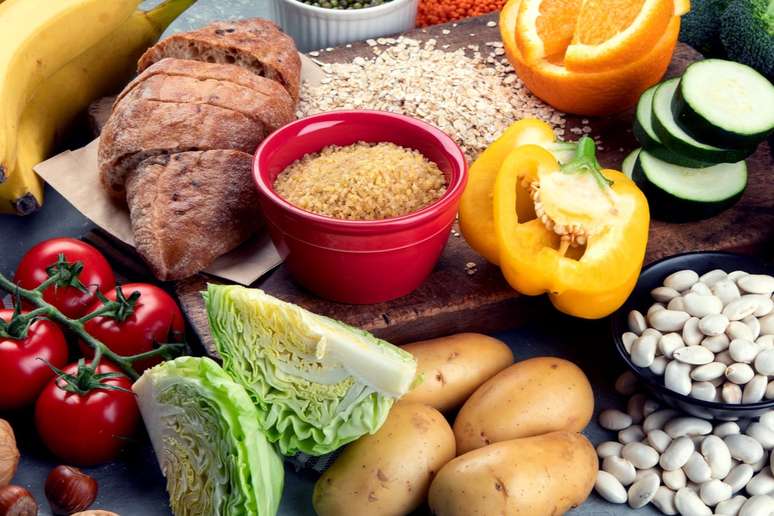Know what foods are
Credit: Eating foods high in fiber is important for the body to function properly (Image: Shutterstock)
Fibers are parts of plant foods that belong to the group of carbohydrates and are not digestible by the body. However, they are very important for the proper functioning of the body. “The fibers present in food help keep the body in balance. They absorb excesses and help eliminate toxins. They prevent constipation and diseases related to the intestine, they help in weight loss and in the prevention of cardiovascular diseases”, explains the nutritionist Fernanda Sobral.
Benefits for the immune system
According to Fernanda Sobral, fiber also helps strengthen the immune system, “as it stimulates the growth of beneficial cells in the intestinal flora, preventing the growth of harmful microorganisms.”
What foods contain fiber?
Fiber can be found in many plant-based foods. According to the nutritionist it is preferable to consume raw foods, well cleaned and with peels (when possible), as they contain a greater quantity of fibres.
Here are some examples of foods recommended by the nutritionist:
- Processed foods with whole grains: bread, cereal bars, wholemeal biscuits, wholemeal breakfast cereals;
- fruit: papaya, pear, plum, orange, pineapple, peach;
- vegetables: cabbage, escarole, rocket, cabbage, spinach;
- Vegetables: pumpkin, carrot, beetroot, okra, zucchini;
- Cereals: oats, flaxseed, chia, wheat germ, muesli;
- legumes: beans, lentils, chickpeas, soybeans.

Fibers that help you lose weightR
These foods are also very suitable for those trying to lose weight “The fibers provide greater satiety and cause gastric emptying to take place in a longer time. Therefore, the feeling of hunger takes longer to occur and, consequently, can lead to lower food intake,” says nutritionist Roberta Stella.
action against fat
As Fernanda Sobral explains, the fibers form a rubber when they come into contact with water. This gum is responsible for slowing down digestion. “The decreased rate of digestion increases the time to satiety due to the presence of food in the stomach for a longer time and the slower release of glucose into the blood,” she clarifies.
The nutritionist states that the slower release of glucose into the blood results in “less release of insulin, a hormone that ‘carries’ glucose into the cells to be used and favors the storage of fat when in large quantities”.
Who can consume?
Whole foods can and should be consumed by people of all ages, including children. “It is important to offer them these types of food from an early age, so that a healthy eating habit is more easily created and to avoid diseases such as obesity, diabetes, hypertension, constipation and cardiovascular disease,” encourages Fernanda Sobral.
As far as consumption is concerned, what changes is that the amount of fiber ingested during the day is different at every age. A child should consume less than an adult. In any case, it is best to consult a nutritionist to indicate the correct quantities.
Source: Terra
Ben Stock is a lifestyle journalist and author at Gossipify. He writes about topics such as health, wellness, travel, food and home decor. He provides practical advice and inspiration to improve well-being, keeps readers up to date with latest lifestyle news and trends, known for his engaging writing style, in-depth analysis and unique perspectives.







